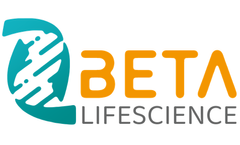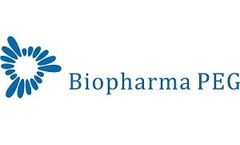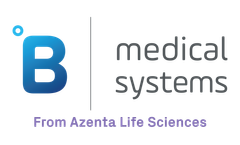Refine by
Drug Resistant Articles & Analysis: Older
50 articles found
Proteolytic targeting chimera (PROTAC) is a new type of drug design technology that works by inducing the degradation of target proteins. ...
Meanwhile, dry lab bioinformatics analysis encompasses tasks like data quality control, the elimination of human sequences, comparison of microbial species sequences, and analysis of drug resistance or virulence genes. Unveiling the Process: Key Stages Sample Collection: Precision in collecting samples from the primary infection site augments detection rates ...
This knowledge is vital when developing therapeutics, such as vaccines, or studying disease progression and drug resistance. Clonality analysis services also play a central role in quality control in biotechnology. ...
With the approval of many antibody-drug conjugation (ADC) drugs around the world since 2019, conjugate drugs have developed into one of the hottest tracks in the pharmaceutical industry. ...
Although ADCs have gone through three iterations, current payloads still have clinical limitations, such as severe side effects and drug resistance. The development of novel ADC payloads is a complex and dynamic process, encompassing a diverse range of agents such as RNA inhibitors, Bcl-xL inhibitors, NAMPT inhibitors, and the proteasome inhibitor carbimycin, ...
This knowledge is vital when developing therapeutics, such as vaccines, or studying disease progression and drug resistance. Clonality analysis services also play a central role in quality control in biotechnology. ...
Due to their targeting of the physical structure of microbial cell membranes rather than specific cellular processes, AMPs have a lower likelihood of inducing microbial resistance, making them potential candidates against drug-resistant strains. ...
Dual target signal blocking exerts unique or overlapping functions to effectively prevent drug resistance: Blocking dual signaling pathways is another important mechanism of action of bispecific antibodies because it can bind dual targets simultaneously. ...
Prominent tumor-associated antigens include mucin-1 (MUC1), human epidermal growth factor receptor 2 (HER-2), cancer-testis antigen 1 (NY-ESO-1), T cell-recognized melanoma antigen 1 (Melan-A or MART-1), prostate-specific antigen (PSA).AntifungalEradicating invasive fungal infections often requires months to years of continuous drug administration, increasing the risk of ...
Correspondingly, elevated CD73 expression is frequently observed in human tumors and is associated with a poor prognosis. CD73 is also implicated in drug resistance, epithelial-to-mesenchymal transition (EMT), and the proliferation and stemness of cancer cells[12]. ...
Additionally, certain intracellular proteins may be resistant to such molecules because they might not be substrates for proteasomal clearance. ...
Importance of Validating Drug Resistance Genes While drug resistance genes identified through plasmid sequencing may show resistance in heterologous hosts, it is imperative to ascertain their resistance in their natural reservoirs. Additionally, drug-resistant ...
Patients with abnormal expression of human epidermal growth factor receptor (HER2) account for 15%-20% of all breast cancers, which is highly invasive and has poor prognosis. Although more drug choices such as pertuzumab and lapatinib on the basis of trastuzumab significantly prolong the survival of patients and further improve the prognosis, many patients are not sensitive to ...
Potential Challenges for PROTAC Although PROTAC has shown positive results in both preclinical and clinical trials, the technology may face the following challenges as its application progresses. Drug resistance: There have been limited reports of drug resistance caused by PROTACs in preclinical trials, but this possibility ...
In certain cases, people are infected with a drug-resistant strain of tuberculosis. This is caused by misuse and mismanagement of the drugs used to treat TB. Drug-resistant strains are more difficult to treat and can lead to life-threatening results if not handled properly. ...
Antibody-drug conjugates (ADCs) usually consist of monoclonal antibodies (mAbs) covalently linked to cytotoxic drugs via chemical linkers. ...
Comparative genomic analysis based on whole genome sequencing plays an irreplaceable role in studying pathogenic mechanisms of pathogenic microorganism, evolution of pathogenic genes and screening of novel, efficient drug targets. Microbial whole genome sequencing can be widely used in various fields. ...
In recent years, the application of targeted therapies has significantly prolonged the survival of patients. However, drug resistance, brain metastases, and other problems have become increasingly prominent in clinical practice. ...
A new structural target for drug development against COVID-19 has been unveiled today by Sibylla Biotech in collaboration with the Italian National Institute of Nuclear Physics (INFN), the University of Trento and University of Perugia.The breakthrough drug discovery strategy pioneered by Sibylla in this study would not only promise to reduce the risk of ...











